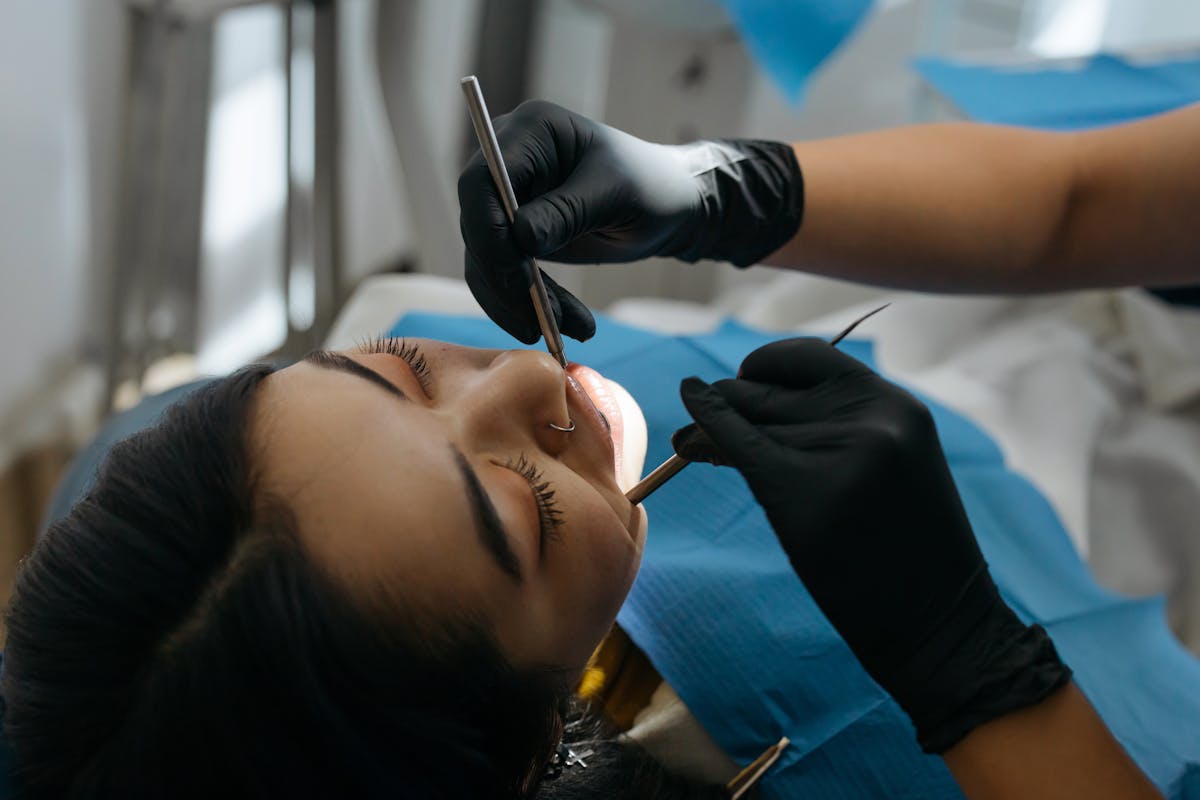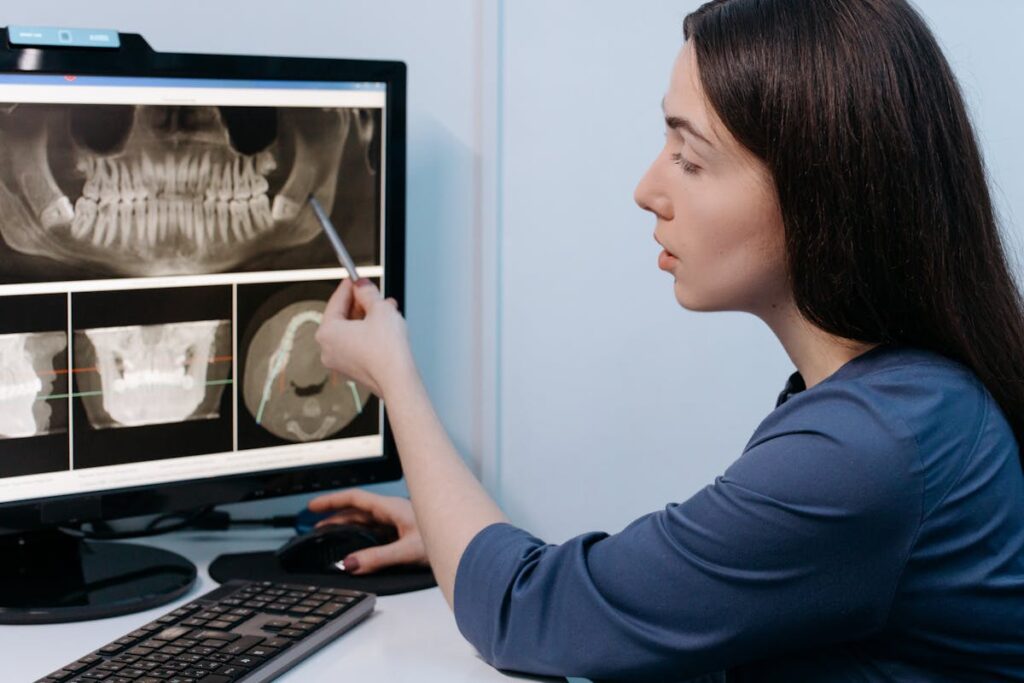Selecting the right oral surgeon in Torrance for complex extractions requires a methodical approach. Key factors include verifying board certification and evaluating experience with similar procedures. Advanced technology like 3D imaging can greatly enhance outcomes. Patient reviews offer insights into the surgeon’s reputation. Communication skills are vital for building trust and easing anxiety. Scheduling a consultation allows for direct evaluation of comfort and expectations, guiding informed decision-making.
Understanding Complex Extractions
Complex extractions refer to the surgical removal of teeth that cannot be easily accessed or extracted using standard dental procedures, often due to factors such as impaction, severe decay, or unusual positioning. These procedures require advanced complex extraction techniques, including sectioning the tooth, removing surrounding bone, or even repositioning adjacent teeth temporarily. Oral surgeons employ specialized instruments and methods to guarantee precise removal while minimizing trauma to surrounding tissues. Following the procedure, patient recovery tips include maintaining oral hygiene through gentle rinsing, adhering to prescribed medications, and consuming a soft diet to facilitate healing. Patients are advised to avoid strenuous activities and to follow specific postoperative instructions provided by the oral surgeon to promote ideal recovery and reduce the risk of complications.
Importance of Credentials and Certifications
When selecting an oral surgeon in Torrance, verifying board certification is essential as it guarantees the practitioner meets national standards of education and expertise. Additionally, evaluating specialized training can provide insight into the surgeon’s proficiency in handling complex procedures. These credentials and certifications serve as benchmarks of quality and competence, guiding patients in making informed decisions.
Verify Board Certification
Board certification serves as a critical marker of an oral surgeon’s expertise and professionalism. It represents a rigorous evaluation of the surgeon’s knowledge, skills, and experience. The importance of verifying credentials cannot be overstated; it assures patients that the surgeon meets the high standards established by the certifying board. This process involves confirming the surgeon’s active status with the American Board of Oral and Maxillofacial Surgery (ABOMS), a recognized authority in the field. Prospective patients should access the ABOMS online database to check certification legitimacy. Additionally, board-certified surgeons are obligated to engage in continuous education and adhere to ethical practice standards, ensuring they remain abreast of advancements in oral surgery techniques and patient care protocols.
Assess Specialized Training
A significant aspect of selecting an oral surgeon involves evaluating their specialized training, which underscores the importance of credentials and certifications. The surgeon’s surgical expertise is largely shaped by rigorous training programs that extend beyond dental school. These programs equip surgeons with advanced skills essential for executing complex extractions with precision and safety. Evaluating an oral surgeon’s credentials provides insights into their professional commitment and mastery in surgical procedures. Certifications from accredited institutions serve as benchmarks, indicating a surgeon’s adherence to the highest standards of practice. Prospective patients should consider these qualifications as they denote proficiency and reliability. Ensuring the oral surgeon has undergone thorough training programs is essential for achieving desirable outcomes and minimizing potential complications during complex extractions.
Evaluating Experience With Similar Cases
Evaluating an oral surgeon’s experience with similar cases is crucial for guaranteeing ideal patient outcomes. Reviewing case studies where the surgeon has performed comparable complex extractions provides insight into their proficiency. These documented instances reveal patterns in surgical outcomes, helping to predict the likelihood of success. A thorough analysis of these outcomes can assess the surgeon’s ability to manage complications and adapt techniques effectively.
Furthermore, evaluating the volume and variety of cases handled offers valuable information about the surgeon’s expertise and familiarity with diverse scenarios. Consistent positive results across numerous case studies can indicate a surgeon’s capability to deliver reliable outcomes. As a result, when selecting an oral surgeon in Torrance, it is essential to reflect on their documented experience with similar complex extractions to guarantee ideal patient care.
Assessing the Latest Technology and Techniques
When selecting an oral surgeon in Torrance, it is vital to assess their use of advanced equipment and cutting-edge surgical methods. Surgeons who employ the latest technology can enhance precision and outcomes, often utilizing minimally invasive innovations to reduce recovery time and improve patient comfort. Evaluating these aspects guarantees that patients receive care aligned with the forefront of dental surgical advancements.
Advanced Equipment Utilization
In the domain of oral surgery, advanced equipment utilization plays a critical role in ensuring ideal patient outcomes and procedural efficiency. Oral surgeons in Torrance increasingly rely on advanced imaging technologies, such as cone beam computed tomography (CBCT), to obtain detailed three-dimensional representations of oral structures. This precision facilitates accurate diagnosis and enhances surgical planning. Additionally, the integration of robotic assistance in complex extractions introduces a paradigm shift, offering unparalleled precision and control. Robotic systems can perform delicate maneuvers with consistency, reducing the risk of human error and improving recovery times. The implementation of such technologies underscores a commitment to leveraging state-of-the-art advancements to optimize surgical outcomes. Selecting an oral surgeon who prioritizes these innovations is imperative for complex extraction cases.
Cutting-Edge Surgical Methods
Building upon the foundation of advanced equipment utilization, cutting-edge surgical methods in oral surgery focus on the incorporation of the latest technology and refined techniques to enhance procedural outcomes. A notable advancement is the use of robotic assistance, which provides surgeons with enhanced dexterity and control. This technology allows for greater surgical precision, reducing the risk of complications and improving recovery times. Additionally, computer-aided design and manufacturing (CAD/CAM) systems facilitate the creation of customized surgical guides, ensuring accurate incisions and extractions. The integration of 3D imaging further aids in preoperative planning, allowing for a thorough assessment of the surgical site. These technological advancements collectively enable oral surgeons to perform complex extractions with increased accuracy and efficiency, ultimately benefiting patient outcomes.
Minimally Invasive Innovations
Advancements in minimally invasive innovations have revolutionized oral surgery, prioritizing patient comfort and reducing recovery times. These techniques, such as laser-assisted surgery and ultrasonic instrumentation, minimize tissue trauma, leading to faster healing and less postoperative discomfort. By employing smaller incisions and precise technology, oral surgeons can efficiently address complex extractions while preserving surrounding structures.
The latest technology incorporates digital imaging for accurate planning, ensuring that procedures are tailored to each patient’s anatomical specifics. This personalized approach further enhances the success rate of surgeries and optimizes patient recovery. Surgeons utilizing minimally invasive techniques can also restrict bleeding and swelling, contributing to improved outcomes. As a result, patients experience shorter downtimes and can resume normal activities more swiftly, marking a significant advancement in oral surgical practices.

Reading Patient Reviews and Testimonials
Evaluating patient reviews and testimonials provides critical insights into an oral surgeon’s expertise and patient care quality. Patient feedback is a valuable resource, offering firsthand accounts of experiences with specific oral surgeons. Online ratings serve as quantifiable measures of patient satisfaction, reflecting the surgeon’s proficiency in complex extractions. Analyzing these reviews can reveal recurring themes, such as professionalism, technical skill, and overall satisfaction. A higher volume of positive testimonials often indicates consistent performance and reliability. It is advisable to take into account both the volume and recency of reviews, as recent feedback may better reflect current service standards. Additionally, attention should be paid to any recurring negative comments, which might highlight potential areas of concern that require further investigation before making a decision.
Considering Communication and Patient Care
How does effective communication impact patient outcomes in oral surgery? Ideal patient outcomes stem from robust patient-provider communication, where clear, concise exchanges guarantee mutual understanding of surgical procedures and expectations. Effective communication is pivotal in alleviating patient anxiety, fostering informed consent, and promoting adherence to post-operative instructions. The surgeon must articulate the complexities of the procedure, potential risks, and anticipated recovery processes with precision. Compassionate care complements technical expertise, as it involves recognizing and addressing patient concerns empathetically. It builds trust, thereby enhancing patient satisfaction and compliance. Fundamentally, a surgeon’s ability to communicate effectively and provide compassionate care is integral to enhancing patient experiences and outcomes in complex extractions. This holistic approach distinguishes proficient practitioners in oral surgery.
Verifying Insurance and Payment Options
When selecting an oral surgeon in Torrance, why is verifying insurance and payment options essential? Identifying the compatibility between the surgeon’s services and a patient’s insurance coverage is significant to prevent unexpected financial burdens. Patients should confirm that the surgeon is within their network to maximize benefits and minimize out-of-pocket expenses. Additionally, understanding the extent of insurance coverage for complex extractions is important, as it varies among providers.
In addition, exploring available payment plans is necessary for those without extensive insurance. Many oral surgeons offer flexible payment options to accommodate diverse financial situations. These may include installment plans or third-party financing. Verifying these aspects beforehand guarantees a smoother financial process, allowing patients to focus on their treatment and recovery rather than financial concerns.
Scheduling a Consultation and Asking Questions
Before undergoing any oral surgical procedure, it is imperative to schedule a consultation to gather detailed information about the treatment plan and the surgeon’s qualifications. During this meeting, individuals should utilize consultation tips to guarantee a thorough understanding of the process. It is essential to prepare a question checklist, focusing on the surgeon’s experience with complex extractions, the expected duration of recovery, and potential risks involved. Inquiries regarding anesthesia options and postoperative care instructions are also advisable. Additionally, confirming the surgeon’s affiliations with professional organizations can provide insight into their commitment to ongoing education. Efficiently using the consultation to address these points guarantees informed decision-making and fosters a clear communication pathway between patient and practitioner.
Reflecting on Personal Comfort and Trust
Trust is a fundamental component in establishing a successful patient-surgeon relationship. Achieving this trust entails careful consideration of personal preferences and comfort levels. Patients should evaluate their comfort in discussing medical concerns, as this openness is essential for effective communication with the oral surgeon. Recognizing the surgeon’s ability to create a reassuring environment is equally important.
Moreover, examining the surgeon’s credentials and experience, especially in complex extractions, contributes greatly to trust. Patients often prefer surgeons who demonstrate empathy and professionalism, aligning with their personal preferences. Comfort levels can be gauged through initial consultations, where patients can observe the surgeon’s interpersonal skills and approach to care. Ultimately, selecting an oral surgeon involves balancing technical expertise with personal comfort, ensuring a sound decision.
Frequently Asked Questions
What Is the Average Cost of a Complex Extraction in Torrance?
The average cost of a complex extraction in Torrance may vary considerably due to cost factors such as the procedure’s complexity and anesthesia type. Insurance coverage plays an essential role in determining the patient’s out-of-pocket expenses.
How Long Does Recovery Typically Take After a Complex Extraction?
The recovery timeline for a complex extraction generally spans one to two weeks. During this period, the healing process involves initial clot formation, tissue regeneration, and bone remodeling, necessitating adherence to prescribed postoperative care for best results.
Are There Any Dietary Restrictions Following a Complex Extraction?
Post-extraction dietary guidelines recommend consuming soft foods to prevent irritation at the surgical site. Emphasizing hydration guidelines is essential, as maintaining fluid intake supports healing. Avoiding hard, crunchy, or spicy foods is advised to guarantee ideal recovery.
What Are Common Complications Associated With Complex Extractions?
Common complications associated with complex extractions include surgical risks such as nerve damage or excessive bleeding, and postoperative infections. Meticulous technique and adherence to sterile protocols are essential to minimizing these risks and ensuring ideal patient recovery.
How Can I Manage Pain Post-Extraction Effectively?
To manage pain post-extraction effectively, patients should adhere to prescribed medications, apply cold compresses, and maintain proper oral hygiene. Pain management strategies are integral to post-extraction care, promoting recovery and minimizing discomfort during the healing process.
